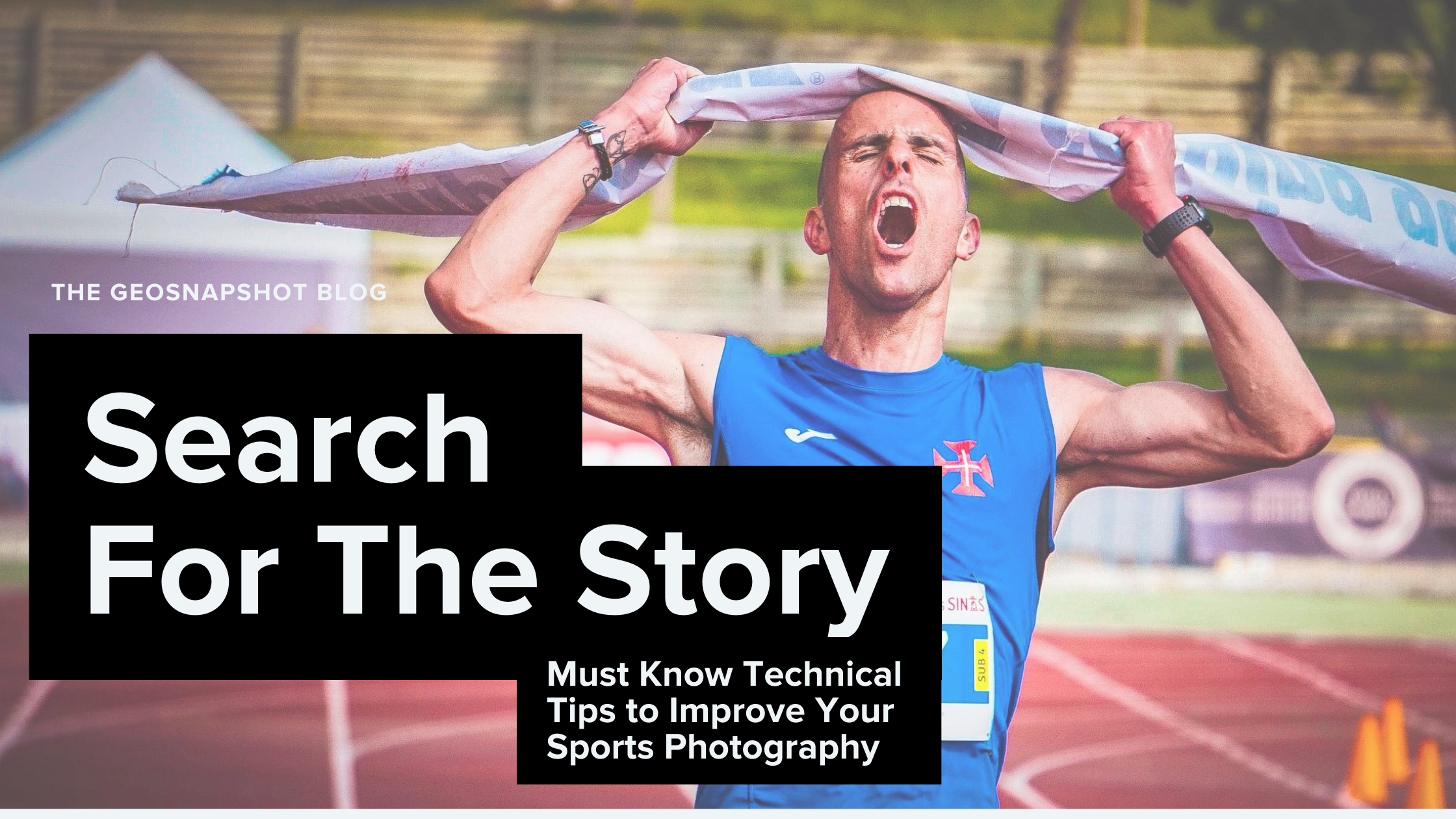
It’s no secret that sports photography is one of the more difficult crafts to master: between the unpredictable play, blurred subjects, and often incalculable lighting conditions, there’s a clear trade-off in ease for the excitement of the arena.
But don’t let the volatility of the field stand in the way of your work. After all, diamonds are made under pressure.
Expert advice helps, too: Introducing GeoSnapShot’s Shoot Your Shot series, where we give sports photographers the lowdown on how to make the best photograph you take the one you shoot tomorrow.
“The most important thing you learn as a sports photographer is anticipation—not where the action is taking place, but where it's going to take place. Not where the subject is now, but where they're going to be.”
- Lawrence Schiller
Search for the Story
Consider the greatest sports photography shots throughout history. Whether it’s Usain Bolt’s final strides as he smashed the 100m world record or Muhammad Ali towering over a sprawled out Sonny Liston, these shots are etched into our collective memory not only because they’re technically composed and well-timed, but because they tell a unique story.
Try to consider sports photography as a kind of visual storytelling. Goals and triathlon wins always make for spectacular shots, but equally interesting images can be taken as hands meet in the center of a pre-game huddle, one athlete supports another with an injury as they leave the field together, or a fan becomes particularly overwhelmed by emotion in the stands.
.png?width=6912&height=3456&name=Blog%20Banners%202023%20(4).png)
Your creative work is only as good as your research. Knowing the rules and intricacies of a sport will better prepare you to anticipate its action and be ready for the moments that you know will make for amazing imagery.
For example: if you understand when and how a player is likely to get a penalty kick in soccer, you’re far more likely to be able to anticipate the reaction of a team when it happens: and, in doing so, quickly pivot your lens to capture that golden moment.
Bonus Tip: Go one step further and come in ready with a plan. The day before a match, put in some research to refresh yourself on the rules of the sport, as well as the venue, teams, and athletes you’re photographing. Chances are you’ll find some interesting material online—such as previous photographers’ work, interviews with players, or the history of the league—that will inform your story-telling decisions on game day.
Use the Warm Up… To Warm Up!
A tried and true way of getting into the spirit of the match is to start shooting before the game. Not only will capturing a warm-up allow you to perfect your camera settings to the conditions of the upcoming event, but it will present you with the perfect opportunity to scout the venue. This is when you put the research we mentioned above into practice. Ask yourself:
- What shooting positions are available to me?
- Are there any particularly interesting angles?
- What are the backgrounds available?
- What lenses will I need with my shooting position?
- Where are the high-profile moments likely to occur?
More importantly, the warm up will make for great images of pre-game tensions, jitters, and excitement: shots perfect for capturing the story of the match. By allowing yourself ample time to capture the players, you’ll snap far more thoughtful images.
.png?width=6912&height=3456&name=Blog%20Banners%202023%20(5).png)
The difference between a good photo and a great photo is the emotional grip it has on its viewer.
Renowned sports photographer Jean Fruth describes the key to capturing emotionally-gripping shoots as focussing on “action, reaction, tears, and cheers.” Here action is what’s happening on the field, and reactions is the responses of athletes, fans, team representatives (such as coaches) and the opposition to this action.
“And then Tears and Cheers is the celebration, right?” Fruth said. “You're approaching the end of your game. And you also want to plan for that. You look at who is going to win, and what is your plan to capture that celebration? Is there a particular player that you want to focus on? Maybe it's players charging off the bench at the end of the game. So what position do you want to be in? Who do you want to capture? What do you want to capture? And I always say an important comment about celebration pictures is that real emotion is quick, quick, quick”
Her bonus tip? Don’t forget about the losing team: “What if your plan was to capture that real emotion from defeat? It can be a very powerful image,” Fruth said.
.png?width=6912&height=3456&name=Blog%20Banners%202023%20(6).png)
Shooting sport may be challenging, but it also offers its photographers massive creative possibilities.
The photographers that take risks, seek to surprise themselves, and remain curious about what both they and their cameras are capable of, are the ones who succeed.
In the words of sports photographer Neil Lafer: “You can't get away from the element of luck in sports photography; but what makes a great sports photographer is that, when we get lucky, we don't miss.”
